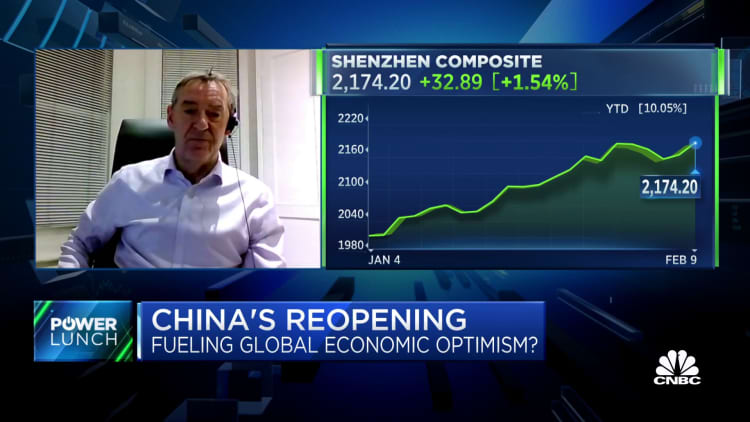Analysts see short-term strength, long-term ‘generational shift’ in
Sheets of copper cathode are pictured at BHP Billiton’s Escondida, the world’s biggest copper mine, in Antofagasta, northern Chile March 31, 2008.
Ivan Alvarado | Reuters
Along with experiencing a short-term supply shortage, copper is set to undergo a “generational shift” in demand as decarbonization ramps up, according to BNY Mellon Lead Portfolio Manager Al Chu.
Copper is a leading barometer of global economic health due to its wide-ranging usage, including in electrical equipment and industrial machinery — it had a strong start to the year, given a weakening dollar and investor expectations to see a surge in demand after the reopening of the Chinese economy.
Short-term supply issues have also emerged alongside a rebound in demand, such as an eruption of protests in Peru, which accounts for 10% of the world’s copper supply.
Copper futures for March delivery settled at $4.1055 per pound on Thursday, after tailing off in recent weeks from the January rally.

Copper prices enjoyed a strong start to 2023 on hopes of resurgent Chinese demand as the economy reopened, but economic uncertainty has since returned.
Although he noted that a Chinese economic reopening and resurgent demand while copper inventories are near cyclical lows would likely lead to a short-term price surge, Chu suggested that the most interesting aspect of the copper outlook is a “secular change” in long-term demand:
“Copper typically is used as a construction metal for wiring for building, wiring for machinery and what not, but if we look at the decarbonization net zero energy transition trend, copper is the new oil,” Chu, who manages the BNY Mellon Natural Resources fund, told CNBC.
“Is it solar power, is it wind, is it EVs, is it any form of renewable energy? Every renewable energy pretty much needs copper, because if you’re talking about electrifying something and transmitting electricity, you need copper.”

Beyond the quantities of copper that are likely to be required to achieve net-zero goals, Chu also highlighted a decline in the grade of the metal over the last 20 years, as well as the length of time it takes to get major mining projects online.
“A lot of these reserves and deposits are found in very, very hard places to produce – Congo, Inner Mongolia – these are not in very developed regions where you say ‘oh it’s really easy, let’s build a mega-mine’,” he said.
“When you look at the long-term secular story, you can just see strong demand. A lot of people focus on lithium as the kind of energy transition metal, but I think we should be much more focused on copper, because I think that is the real pinch point, the real choke point for the energy transition story.”
Citing the old economic adage of “the best cure for high prices is high prices,” Chu said there will always be short-term cyclical volatility, but that the price of copper will likely keep rising until it incentivises much larger exploration cycles or a ramp-up of secondary markets…
Read More: Analysts see short-term strength, long-term ‘generational shift’ in
